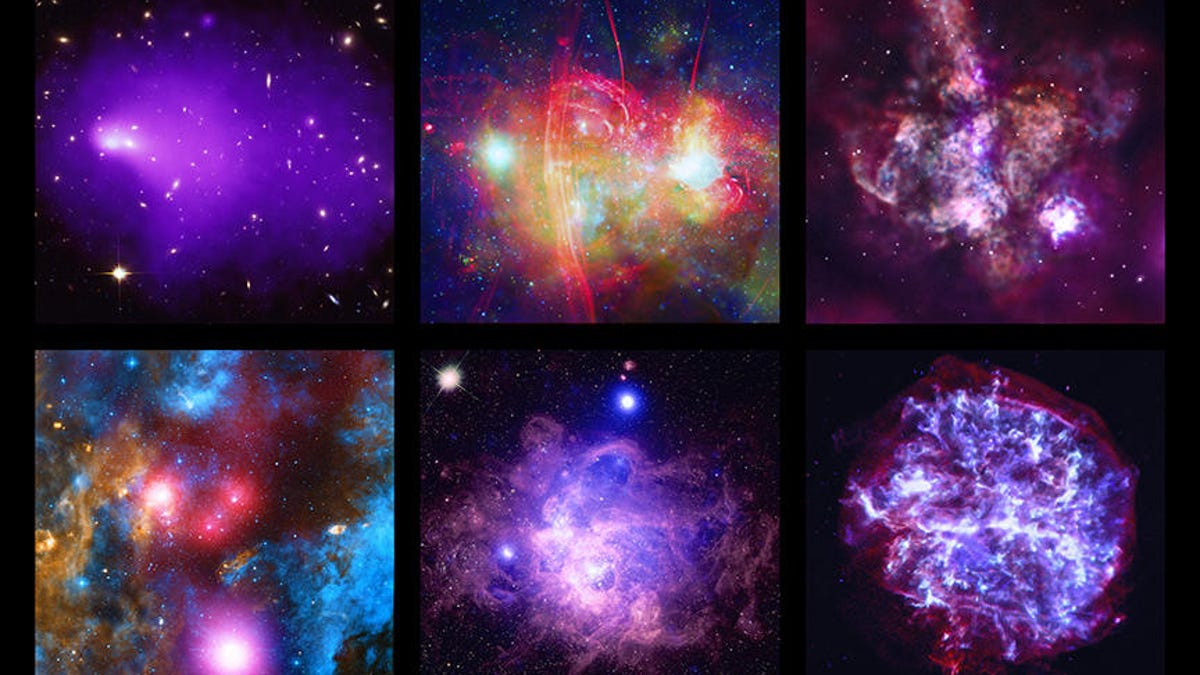NASA releases magnificent new images of the Milky Way
It's the Chandra X-ray Observatory's 20th anniversary, and NASA is celebrating in celestial style.

These Chandra 20th anniversary images show galaxy clusters, the Milky Way center and some exotic star-forming regions of space.
NASA's Chandra X-ray Observatory is marking 20 years since the Space Shuttle Columbia launched it into space on July 23, 1999. The agency released a series of gorgeous, new Chandra images to celebrate.
Chandra is built to see X-ray emissions, making it perfect for observing hot stuff like stars and galaxy clusters. The telescope's unique vision generates colorful images that highlight tumultuous processes happening among the stars. Researchers often combine Chandra's viewpoint with that of other telescopes, including Hubble.
All of the new images are lookers, but Chandra's view of Sagittarius A*, the supermassive black hole at the center of our Milky Way galaxy, is a real eye-opener.
This composite image of the Milky Way's center combines Chandra X-ray observations with radio data from the MeerKAT telescope in South Africa.
The psychedelic composite image shows "clouds of gas at temperatures of millions of degrees, neutron stars and white dwarf stars tearing material from companion stars and beautiful tendrils of radio emission." It combines Chandra's X-ray data in green and blue with radio data seen in red from the MeerKAT telescope in South Africa.
Cygnus OB2 is a massive star with a relatively short lifespan.
NASA also released a composite image of massive star Cygnus OB2 that combines Chandra observations with data from two other telescopes. This bright, wild view shows how this star is sending out high-energy winds.
"These violent winds can collide or produce shocks in the gas and dust around the stars, depositing large amounts of energy that produce X-ray emission that Chandra can detect," according to NASA.
In 20 years, Chandra has taken 2,700 trips around the Earth and traveled more than 1.5 billion miles (2.4 billion kilometers).
You can check out close-ups of all the anniversary images on the Chandra site and lose yourself in the wonders of the universe. The space telescope has more than earned its place as one of NASA's "Great Observatories."
Originally published July 23, 9:23 a.m. PT.

